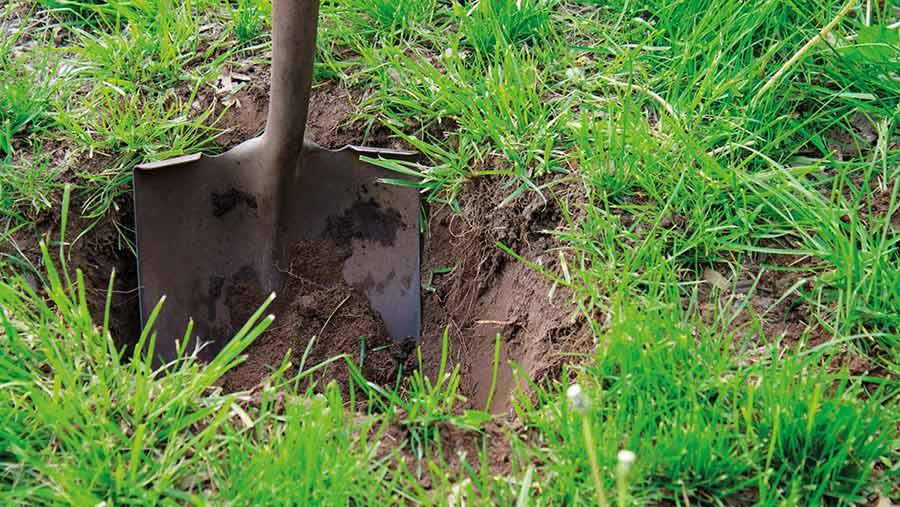Tools that can help with carbon footprint assessments
 © C Tierney/Adobe Stock
© C Tierney/Adobe Stock Ambitious carbon footprinting requirements from milk buyers are an opportunity to improve farm efficiency and road-test important environmental impact tools, farmers heard at Dairy Day this week (15 September).
Farms supplying major retailers will have to start producing carbon footprint assessments from April next year.
Kite Consulting’s John Allen said this was in response to the government’s net-zero target, which aims to slash national emissions by 78% by 2035 compared with 1990 levels.
Farms form part of supermarkets’ “scope three” emissions. Scope one includes direct emissions such as heating shops, and scope two is indirect emissions, such as travelling to work.
Mr Allen said some aligned farms had already submitted assessments for their milk buyers.
How to start out with carbon footprinting
- Engage with your milk buyer – if you are on an aligned contract, there is more chance there will be a system in place
- Ask if your milk buyer will help you
- Smaller dairies may rely on farms to instigate carbon footprinting themselves
- Start with good data to make assessments easier and more accurate – for example, fertiliser use, age at first calving, feed rate, what you are feeding (soya or rapemeal) and pregnancy rate
- Use the tool as an action plan to make improvements from a baseline and look to produce more milk and beef from fewer inputs
Source: Tom Gill, Promar International , and Rachael Madeley Davies, Kite Consulting
Addressing a packed climate seminar, livestock sustainability consultant Jude Capper told farmers there was no perfect carbon toolkit.
See also: Don’t be too hasty to sell carbon credits, farmers warned
Shortcomings included an inability to manage two crops in a year (such as cover crops after oilseed rape) and big issues such as pasture being classed as a feed or not. But she encouraged farmers to road-test tools so developers could improve them.
“The more farms that use the tools, the more data that goes into the systems, the better road-tested they are – it’s a positive feedback cycle,” said Dr Capper.
She added: “Then we identify gaps and improve the science. We need an industry standard for carbon and, eventually, a global standard to compare us with New Zealand, Australia, Europe and the US. We should all be able to talk back at the myths – we must protect our industry.”
Summary of Kite and NMR’s carbon toolkit evaluation |
||||||
|
Programme |
Farm or supply chain |
Free |
Data entry |
Does it count sequestration? |
Is it PAS2050:11 (a greenhouse gas lifecycle standard) compliant? |
Ease of input |
|
Farm Carbon Toolkit |
Both |
✔ |
Online by farmer or consultant |
✔ Soil |
✔ But some elements uncertified |
Easy, good visuals |
|
Cool Farm Tool |
Both |
✔ |
Online by farmer or consultant |
✖ |
✔ |
Easy |
|
AgreCalc |
Both |
✔ |
Online by farmer or consultant |
✔ Soil and woodland |
✔ |
Easy |
|
Solagro Carbon Calculator |
Farmer |
✔ |
Excel spreadsheet download |
✔ Hedgerows |
✔ |
Spreadsheet makes it challenging |
|
Alltech ECO2 |
Supply chain |
✖ |
Farm/virtual assessment |
✖ |
✔ |
Flexible |
|
Promar |
Supply chain |
✖ |
Collector, farmer portal entry or hybrid approach |
✔
|
✔ |
Flexible |
|
Intellync (AB Agri) |
Supply chain |
✖ |
Farm/virtual assessment |
✔ Permanent pasture |
✔ |
Flexible |
|
Sustell, Royal DSM |
Supply chain |
✖ |
Online farmer entry supported by pre-defined elements |
✖ |
✔ |
Easy |
|
Sandy, Trinity AgTech |
Both |
✖ |
Online farmer entry supported by data using software interface |
✔ Soil and agroforestry |
✔ |
Easy |
|
Source: Kite Consulting and National Milk Records document. Note, this is an abridged version |
||||||
